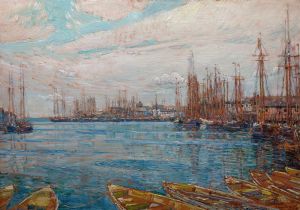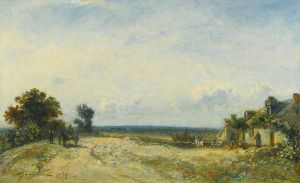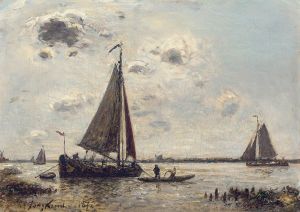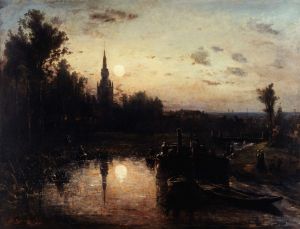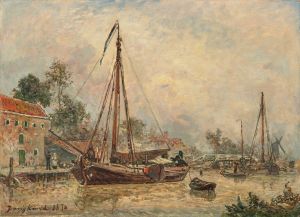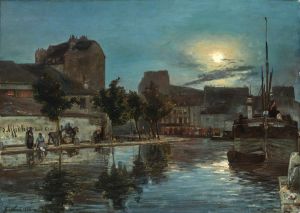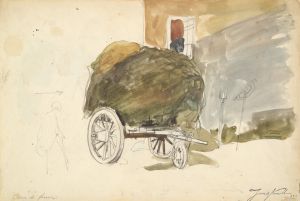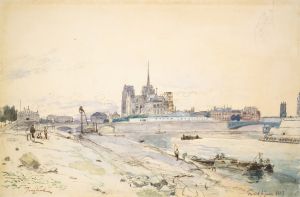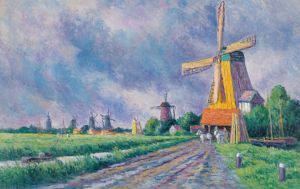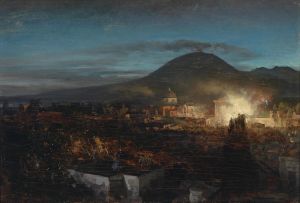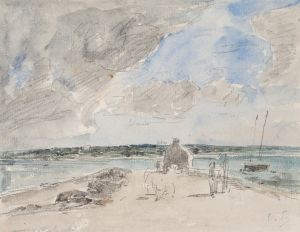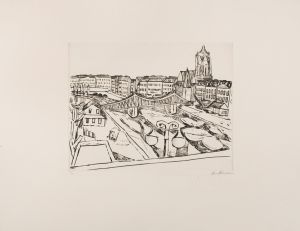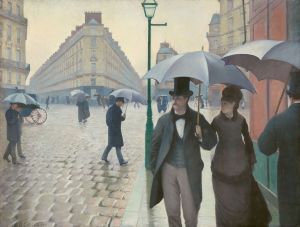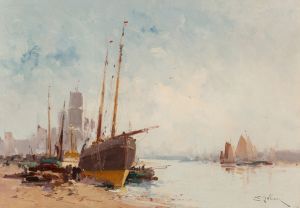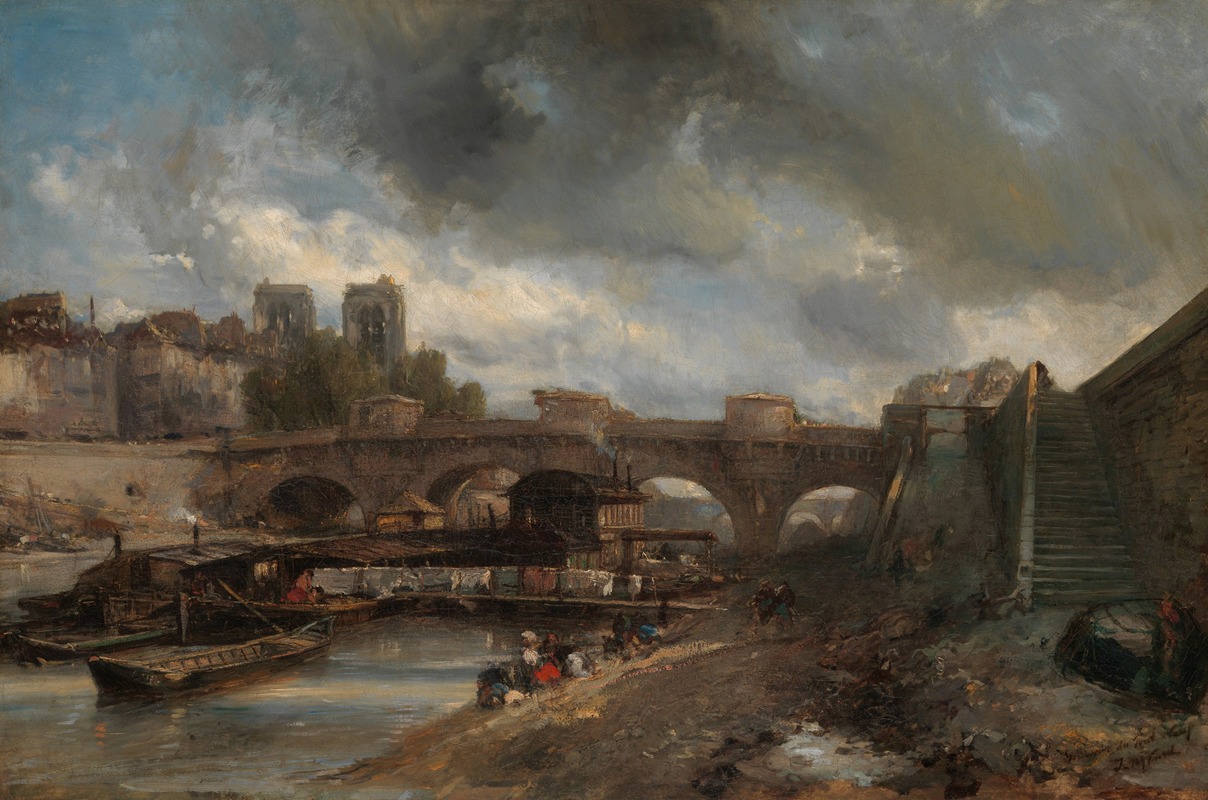
The Pont Neuf
A hand-painted replica of Johan Barthold Jongkind’s masterpiece The Pont Neuf, meticulously crafted by professional artists to capture the true essence of the original. Each piece is created with museum-quality canvas and rare mineral pigments, carefully painted by experienced artists with delicate brushstrokes and rich, layered colors to perfectly recreate the texture of the original artwork. Unlike machine-printed reproductions, this hand-painted version brings the painting to life, infused with the artist’s emotions and skill in every stroke. Whether for personal collection or home decoration, it instantly elevates the artistic atmosphere of any space.
Johan Barthold Jongkind, a Dutch painter and printmaker, is renowned for his significant contributions to the development of Impressionism. One of his notable works is "The Pont Neuf," which captures the essence of Parisian life and the architectural beauty of the city. Jongkind was born on June 3, 1819, in the Netherlands and later moved to France, where he became an influential figure in the art world.
"The Pont Neuf" is a painting that exemplifies Jongkind's skill in depicting light and atmosphere, elements that would later influence the Impressionist movement. The Pont Neuf itself is the oldest standing bridge across the river Seine in Paris, completed in 1607. It is a subject that has fascinated many artists due to its historical significance and its central location in the vibrant city of Paris.
Jongkind's depiction of the Pont Neuf is characterized by his loose brushwork and his ability to capture the transient effects of light on water, a technique that was innovative at the time. His use of color and light creates a sense of immediacy and movement, drawing the viewer into the scene. This approach to painting was a departure from the more detailed and structured compositions of earlier landscape artists.
Jongkind moved to Paris in 1846, where he became acquainted with several artists who would later form the core of the Impressionist movement, including Claude Monet. His work was well-received in Paris, and he exhibited at the Salon, the official art exhibition of the Académie des Beaux-Arts in Paris. Despite facing financial difficulties and struggling with alcoholism, Jongkind continued to paint and develop his unique style.
"The Pont Neuf" is one of many works by Jongkind that showcases his fascination with the interplay of light and water. His paintings often feature rivers, canals, and coastal scenes, reflecting his interest in maritime subjects. Jongkind's ability to capture the changing moods of the sky and water was highly regarded by his contemporaries and continues to be appreciated by art enthusiasts today.
Jongkind's influence on the Impressionists is well-documented. Claude Monet, in particular, credited Jongkind with teaching him the importance of painting en plein air, or painting outdoors, to capture the natural light and colors of a scene. This technique became a hallmark of the Impressionist movement, which sought to portray the effects of light and atmosphere in a more spontaneous and naturalistic manner.
"The Pont Neuf" remains an important work in Jongkind's oeuvre, illustrating his transition from traditional landscape painting to a more modern approach that emphasizes the fleeting qualities of light and color. His innovative techniques and his ability to convey the atmosphere of a scene paved the way for the Impressionists, who would further explore these ideas in their own work.
Johan Barthold Jongkind passed away on February 9, 1891, but his legacy lives on through his paintings, which continue to be celebrated for their beauty and their influence on the course of art history. "The Pont Neuf" stands as a testament to Jongkind's skill and his pivotal role in the evolution of modern art.





